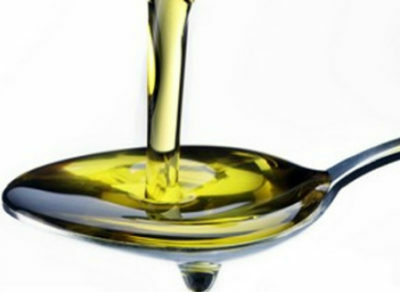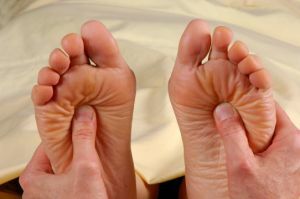 Paresis is a partial paralysis in which a person can not perform any action. This violation is caused by the occurrence of serious lesions in the central and peripheral nervous systems.
Paresis is a partial paralysis in which a person can not perform any action. This violation is caused by the occurrence of serious lesions in the central and peripheral nervous systems.
Violations are organic and functional. If there is an opportunity to determine the cause of the failure of the nerve impulse to the muscle - it is an organic violation. When functional disorders occur, the cerebral cortex is damaged.
The most common diagnoses are paresis:
- of the facial nerve;
- of upper and lower extremities;
- stops;
- of the larynx.
Contents of
- Why does this happen?
- Classification and varieties
- All facial expressions on the face
- Limb immobilization
- Vocal ligament parasite
- Special risk group - infants
- Diagnostic methods
- Qualitative approach to therapy
Why does this happen?
There is no one reason for the occurrence of pareses. Disturbance of motor function can be triggered by any damage to the nervous system. Hereditary and congenital degenerative pathologies are usually accompanied by impairment of motor function:
- , the cause of cerebral palsy is most often the birth trauma( spastic postpartum paresis is observed);
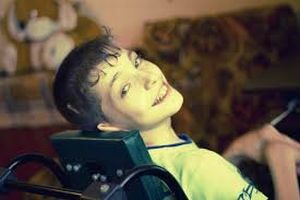
- Multiple sclerosis - a disease of unknown etiology, occurs with motor disorders of varying severity;
- often paralysis is a manifestation of hysteria - a psychogenic factor;
- circulatory system disorders ;
- various tumors and injuries .
Organic causes:
- malignant tumors;
- of vascular disease;
- multiple sclerosis;
- poisoning;
- digestive system disorders;
- injury.
Infectious causes:
- poliomyelitis;
- inflammation of the membrane of the brain( meningitis);
- tuberculosis;
- is a viral encephalitis.
Classification and varieties of
Pareses are classified:
- according to the degree of CNS involvement;
- by severity;
- for localization within one limb;
- for the number of limbs involved.
In addition to paralysis of the musculoskeletal system, there are paresis of the intestine, bladder and other internal muscular organs.
The degree of severity of paresis is determined by two special scales. One scale shows the degree of decrease in the strength of the muscle tissue, the other is the degree of severity of the paresis:
- 0 score - arbitrary movements absent, complete paralysis;
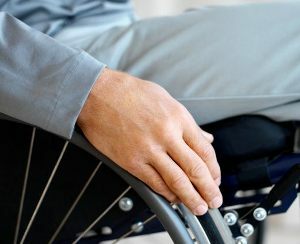
- 1 score - there are no movements in the joint, but there are slightly noticeable movements of the muscles;
- 2 score - movement in diarrhea is, but their amplitude is very small;
- 3 score is a serious reduction in joint motor activity, but muscles can overcome gravity. The patient can lift the limb from the floor;
- 4 points - movements are kept in full, but there is a slight decrease in muscle strength;
- 5 score - the full volume of movements and satisfactory muscle strength.
All facial expressions on the face
Paresis of the facial nerve entails serious discomfort, because a person's self-esteem is reduced. Paralysis of a person who does not pass for a long time is a consequence of a tumor, an unsuccessful operation or a stroke.
The symptomatology is quite typical:
- when the patient tries to lift the brow ridges, skin folds on the forehead do not appear;
- does not close the eye;
- there is a flattening of the nasolabial fold;
- corner of the mouth is not moving;
- at the attempt to smile the face warps.
 Because the facial nerve also includes other nervous branches, taste sensations can be broken, dryness in the eyes is noted, the secretion of the salivary glands is strengthened, paracussis phenomena are observed, in which the patient is easier to perceive someone else's speech in a noisy environment than in complete silence.
Because the facial nerve also includes other nervous branches, taste sensations can be broken, dryness in the eyes is noted, the secretion of the salivary glands is strengthened, paracussis phenomena are observed, in which the patient is easier to perceive someone else's speech in a noisy environment than in complete silence.
Light paralysis of the face in most cases passes in a few days without a trace. However, sometimes the pathology leaves after itself complications:
- Irreversible lesions that leave signs of paralysis for life .
- Incorrect recovery of nerve fibers, which leads to synkinesis ( involuntary muscle contraction).With a smile, the patient may have an eye or something similar.
- From the side of the permanently open eye, may occur as a complete or partial blindness of , which is a consequence of the drying of the cornea.
Limb immobilization
When paresis of limbs, motor dysfunction occurs, which provokes a malfunction in the work of the cortex. These departments, in turn, provide motor activity. Most often, this pathology develops against a background of stroke or cerebral vascular ischemia.
If treatment of the disease is started too late, the diseased limb may permanently remain immobile( complete paralysis).Therefore, it is very important to identify the disease on time. Meanwhile, people often write off a slight weakening of muscle activity to stretch the muscle, and paresis is progressing in the meantime.
For paresis of the upper limbs, a typical limitation of any movements is typical. Pathology can be identified with a normal handshake. And a sharp paresis of the hand can occur suddenly, for no apparent reason.
The disease is accompanied by intense pain, which can be exacerbated by coughing. Acute peripheral paresis is observed with certain injuries of the hand, under which the corresponding nerve was touched.
Most often there are pareses:
- brushes;
- flexor and extensor fingers;
- small muscles of the hand;
- partial paralysis of the ulnar nerve;
- poor mobility of the little finger.
The brush becomes similar to the paw of the animal, since the fingers are bent in the distal and proximal phalanges, and the main ones are unbent. 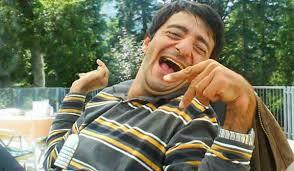
When paresis of the lower limb, it is difficult for the patient to flex his leg in the thigh, it is difficult to perform any movements in the ankle. Even a minor trauma to the nerve of the thigh can result in peripheral proximal paresis.
If the patient has a decrease in sensitivity on the outside of the thigh - this is a mononeuropathy of the femoral nerve. In addition, with this pathology, the mobility of the leg extension is limited.
With a lesion of the peroneal nerve, the patient loses the ability to walk on the heels, withdraw the foot and raise its outer edge. There is a hanging of the foot, the sensitivity on the outside is lost. The gait of such a person changes much and resembles a cock.
Paresis of the vocal cords
In case of pathology, the vocal cords partially lose their main function. The cause of this ailment is the dysfunction of the nerve ending that provides the upper respiratory tract, in particular the vocal cords.
But the activity of vocal cords can not stop for no reason at all. Most often, such a defect occurs when:
- carrying out a complex operation on the thyroid gland;
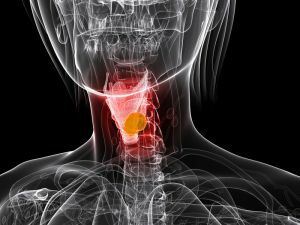
- damage to the walls of blood vessels;
- injuries of the spine;
- of any tumors( malignant, benign);
- unnatural protrusion of the walls of the aorta;
- serious pathologies of the cardiovascular system;
- damage to the vertebrae of the cervical region;
- jamming of nerve endings that go from the digestive tract.
Special risk group - infants
Sometimes births occur with complications, so the child in the process of birth can get injured. Most often this happens when applying forceps or during prolonged delivery. In a similar situation, a newborn can develop paresis of the facial nerve.
This pathology manifests itself in the form of impaired motor function of the facial muscles, which, on the one hand, are in a weakened state.
 The neonate has an asymmetric face. The muscles of the face change to a healthy side. Sometimes such a situation is resolved by itself and does not require correction. But in most cases the child has to be treated with a neurologist.
The neonate has an asymmetric face. The muscles of the face change to a healthy side. Sometimes such a situation is resolved by itself and does not require correction. But in most cases the child has to be treated with a neurologist.
You can visually determine the facial paresis of a newborn. When you look at the baby, you can see that one corner of his mouth is down, and his face looks asymmetric.
The paresis of the hand in a newborn is the most severe type of lesion. The hand of the child lashes hanging along the body, it can easily be wrapped around the neck. Movement in the hand is completely absent, the skin on the limb is pale and cold to the touch.
Diagnostic Methods
To correctly diagnose paresis and its causes, a whole complex of medical research is needed. Usually the following activities are performed:
- a primary examination of the neurologist , during which the doctor analyzes the situation, determines the symptoms and the degree of loss of muscle strength;
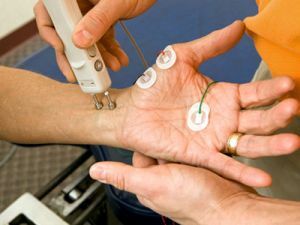
- general, biochemical, toxicological blood test ;
- ENMG - electroneuromyography .With the help of this technique, the speed of passage of the nerve impulse and the electrical activity of the muscle tissue are determined;
- MRI and CT ;
- EEG - an electroencephalogram evaluates the functionality of the brain regions;
- MRA - Magnetic resonance angiography is a study by which any brain tumors are detected, and the integrity of the cranial-cerebral arteries is determined.
Qualitative approach to therapy
At the very beginning of its development paresis is manifested by a slight discomfort, which many people simply do not pay attention to. However, a small inconvenience can result in paralysis.
If a patient has acute pathology, paralysis progresses rapidly. The first thing a doctor should do to help with an unexpected attack is to limit the cause that led to paresis.
A patient diagnosed with impaired motor function should understand that this is not an independent disease, but only a consequence of another pathology, perhaps more serious. That is why the therapeutic measures are directed to the elimination of the underlying disease:
- if the paresis is triggered by the stroke by , the patient needs restorative therapy;
- with injury and damage, peripheral nerve stapling is necessary;
- removal of tumors compressing the nerve branches;
- to prevent muscle atrophy are mandatory massage sessions .
In addition to the above activities, the patient is shown aerotherapy, taking multivitamin complexes.
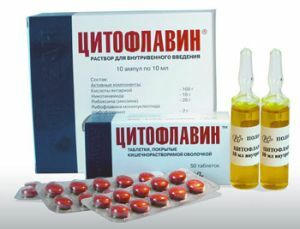 Before starting treatment with medicines, the doctor must psychologically prepare the patient for recovery. The absence of a positive attitude will not allow the body to mobilize all its internal resources.
Before starting treatment with medicines, the doctor must psychologically prepare the patient for recovery. The absence of a positive attitude will not allow the body to mobilize all its internal resources.
And the therapy requires not only paresis, but also the accompanying pathologies, which were the cause of the development of the disease. To stimulate metabolic processes in tissues, the patient is prescribed "catalyzers of cellular respiration"( Cytochrome C, Cytoflavin).These drugs help to reduce oxygen starvation of muscle tissue.
Medications that improve metabolism in tissues:
- Solcoseryl;
- Cerebrolysin;
- Mexidol;
- Pyracetam;
- Actovegin.
The purpose of these drugs is to increase the output of glucose and stimulate the brain cells to consume oxygen.
Medicines based on Siberian larch, reduce the risk of recurrent stroke, help normalize the concentration of cholesterol to the bloodstream, strengthen the walls of capillaries and large blood vessels:
- Trental;
- Reabilar;
- Kapilar.
Patients suffering from brain pathologies are prescribed an extract from walnuts, which should be taken 3 times a day for 1 teaspoonful. Therapeutic course is 21 days. Microcirculation during treatment with this drug is improved at all levels.
When paresis of the limbs, the vitamins of groups A, B, E are required. For the weakened by the disease of the body they are the main source of life-support. 
It is very important to take vitamins and in kind, that is, together with food. All that is needed at this moment, can be found in legumes, liver, eggs and green vegetables.
A huge value for any form of paresis is given to trace elements. Replenish the deficit of these substances can be with the use of extract trepanga, which is the content of trace elements is the absolute leader among other pharmacy products.
Very strong role is played by the will of the patient and the desire to defeat the disease. Of course, this rule does not apply to young children who are not yet aware of their condition.
The prognosis depends on the cause of the disease and its severity. For example, if the paresis of the foot is triggered by nerve damage or trauma, as a rule, it is well treated.
If there is a progressive neurologic disease in the body, it is likely that the paresis of the leg will remain forever. However, for the duration of life most often violations of this type of influence do not have.

